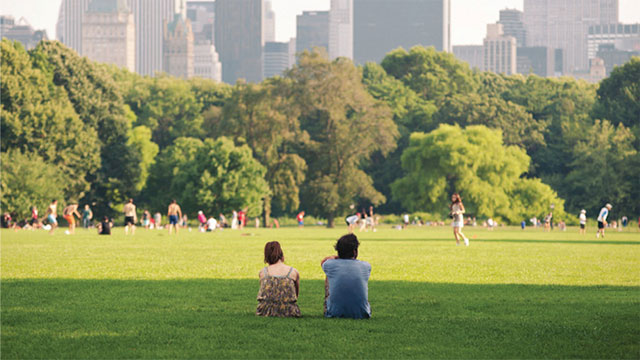
Controlling climate change, conserving natural resources and improving building performance: environmental challenges are at the heart of current concerns. To what extent do the impacts of these rapid and profound changes affect citizens' behavior and lifestyles? Environmental psychology focuses on the relationship between individuals and their living environments. The recently published collective work, “L'individu au risque de l'environnement” [The individual exposed to environmental risk], offers a comprehensive assessment. Dorothée Marchand, co-lead author and researcher in the Economics and Humanities department at the CSTB, explains some of the issues.
Environmental psychology studies the relationship between human behavior and the living environment. It underscores the need to consider the representations and practices of individuals in their contexts. Objective: better understand inhabitants and sustainably develop their living environments. Whether developing a neighborhood, renovating or managing the life of a building, projects must consider individuals' capacity to cope with environmental risks in their surroundings.
“L'individu au risque de l'environnement” examines the current state of environmental psychology. This collective work, written by three researchers, Dorothée Marchand, co-lead author and researcher at the CSTB, Sandrine Depeau and Karine Weiss, just appeared in book shops. Several issues are addressed, including the relationship of humans to nature and the built environment; knowledge and beliefs about emerging risks; humans’ ability to adapt to natural hazards and the culture of sanitary risk. In this book, environmental psychology focuses on current challenges to contribute to improving the quality of life and well-being of inhabitants.
Focus on health risks. Lifting the weight of anxieties and supporting the psychological recovery of individuals facing a sanitary crisis: this is one of the contributions of environmental psychology, described in chapter 7 of “L'individu au risque de l'environnement.”
“Let’s look at a few examples,” begins Dorothée Marchand, co-lead author of the book and researcher at the CSTB. “Employees in both the public and private sectors often express health concerns regarding the workplace. There is a high prevalence of asthma and allergies in adults or children who are residents of apartment buildings. General concern and uneasiness are conveyed by building users. These situations are collective symptoms that can lead to a sanitary crisis. They refer to what is called sick building syndrome (SBS).”
“Scientific results presented in the book demonstrate the benefits of the social sciences in managing sanitary crises. The authors show that, in the cases explored, environmental factors explain the origin of the crisis and psychosocial factors are components illustrating its progression. Thus, social sciences play a major role in an interdisciplinary research approach. They help identify the underlying processes of the crisis and develop appropriate management tools.
Specifically, technical solutions can mitigate the sanitary risk and improve the quality of the living environment. Their implementation must include psychological and social work to restore balance, well-being and serenity in people overwhelmed by a sanitary crisis.”
Learn more:
- “L'individu au risque de l'environnement”, a book published by In Press
- “PSYCOBAT – Du syndrome des bâtiments malsains au syndrome psychogène collectif” [PSYCOBAT: from sick building syndrome to collective psychogenic illness], final report, May 2012
- CSTB scientific publications
- Website of the Association for Environmental Psychology Research (ARPENV)
